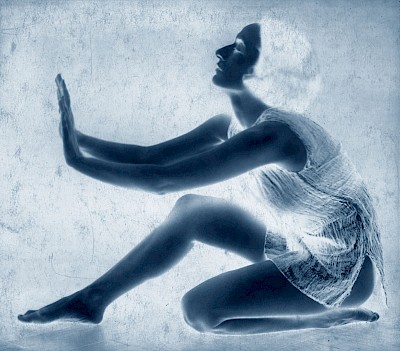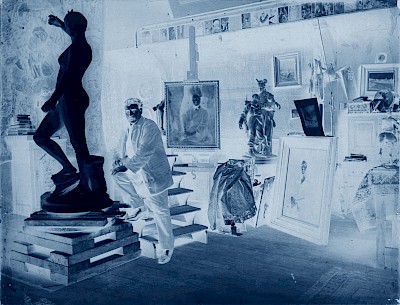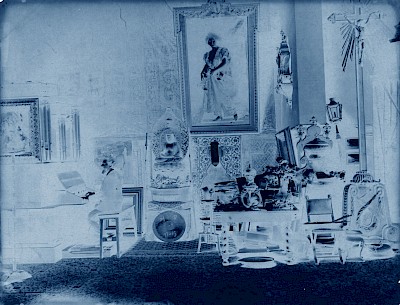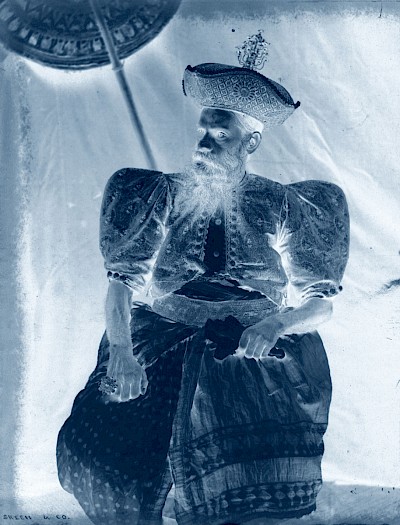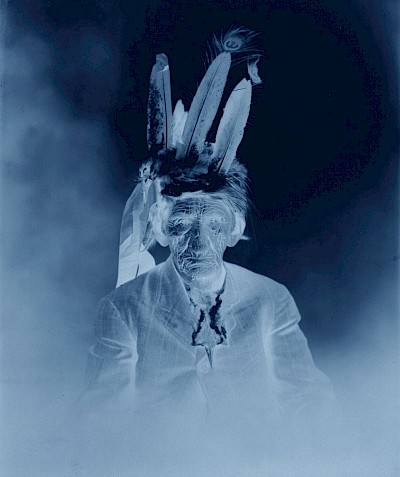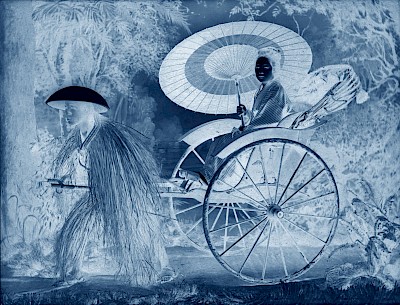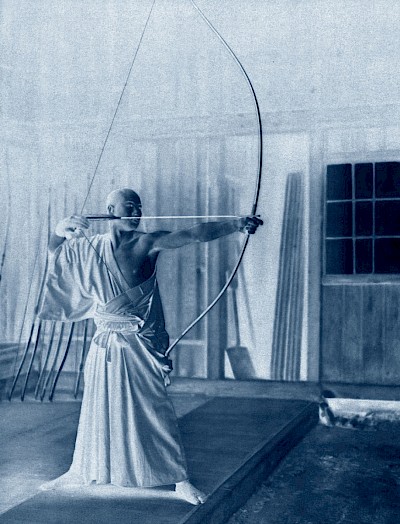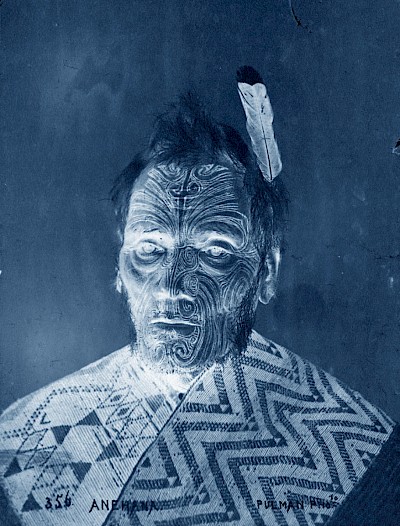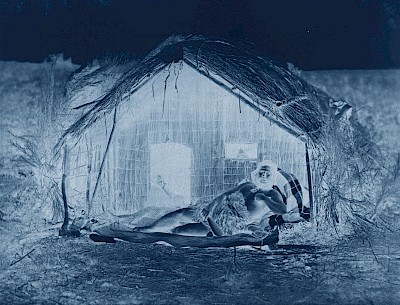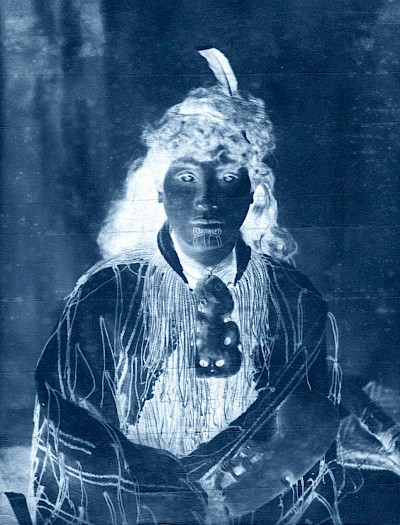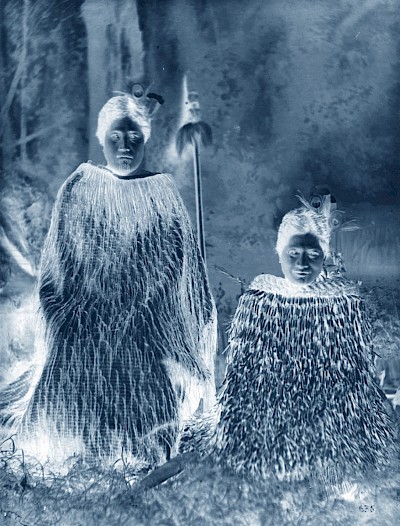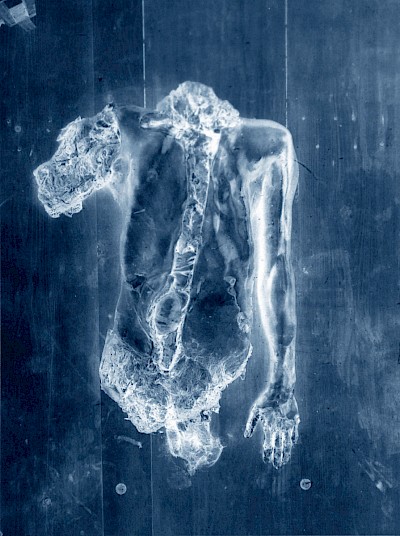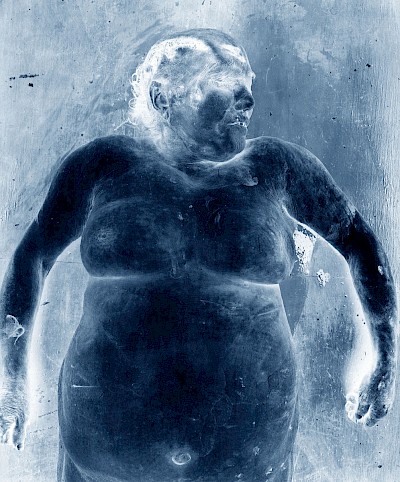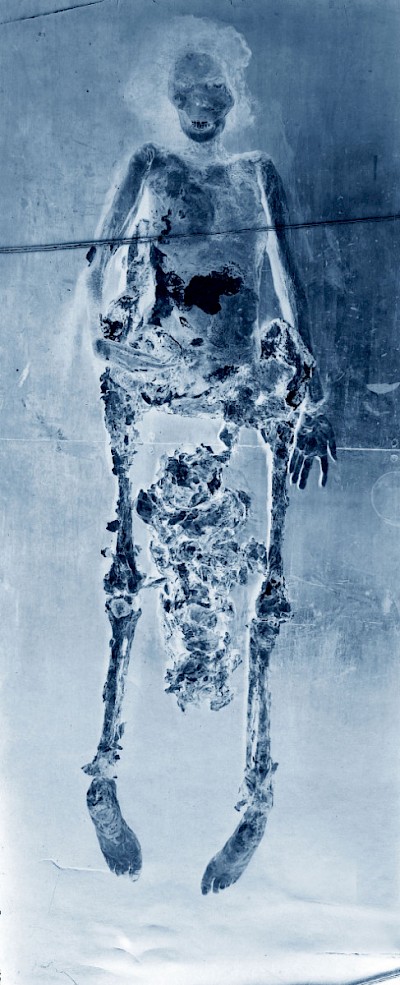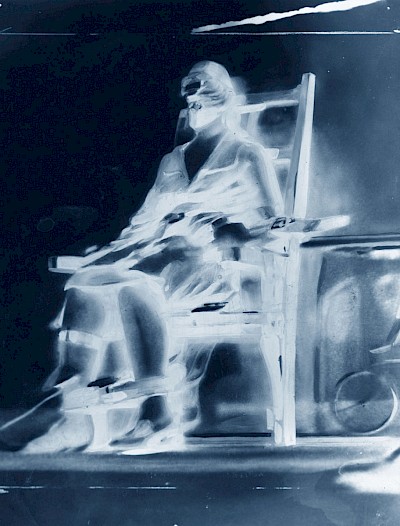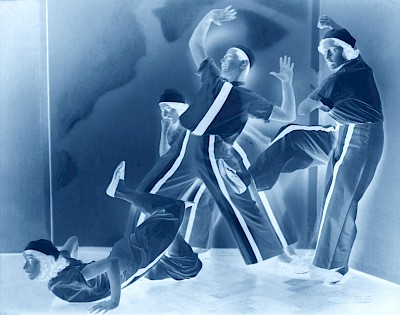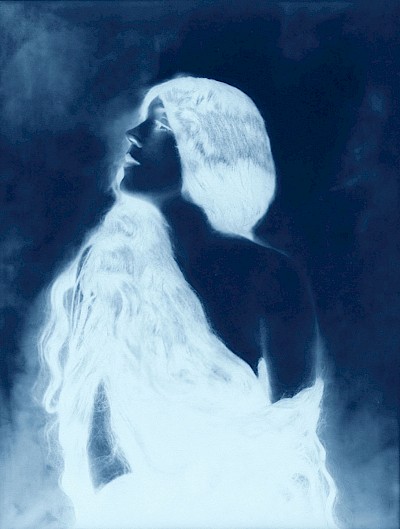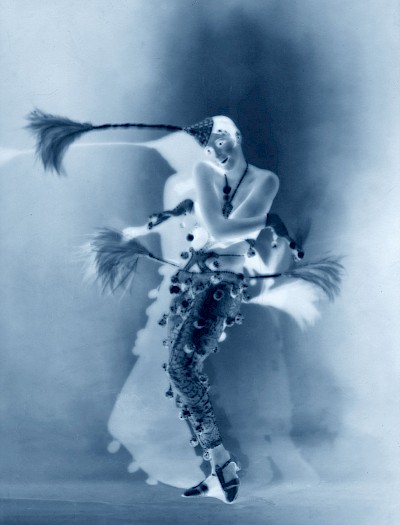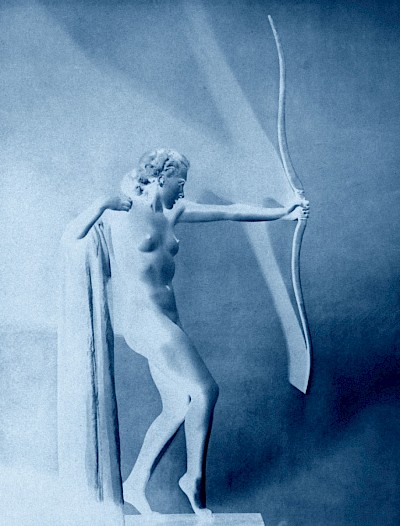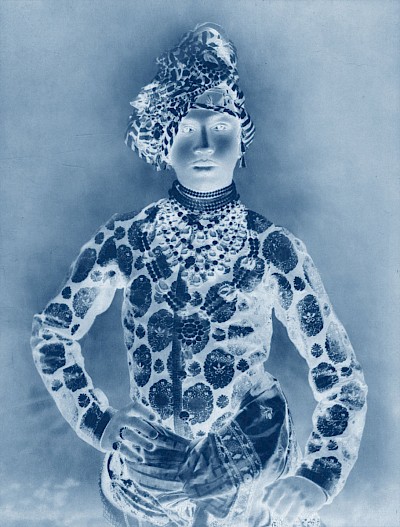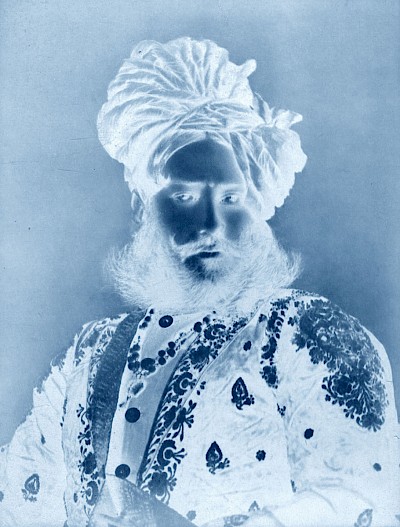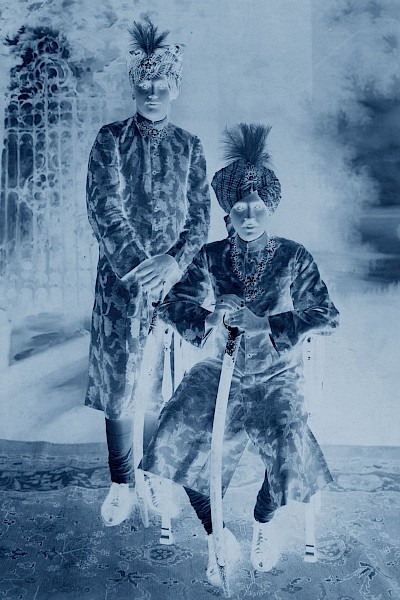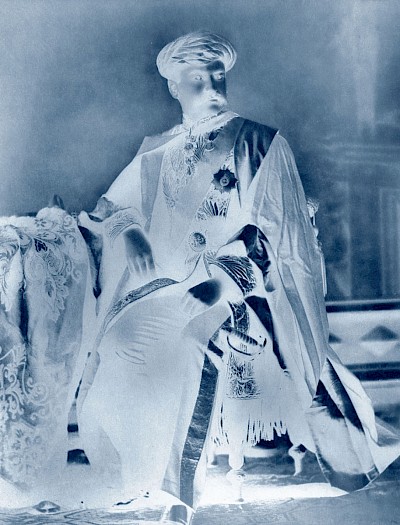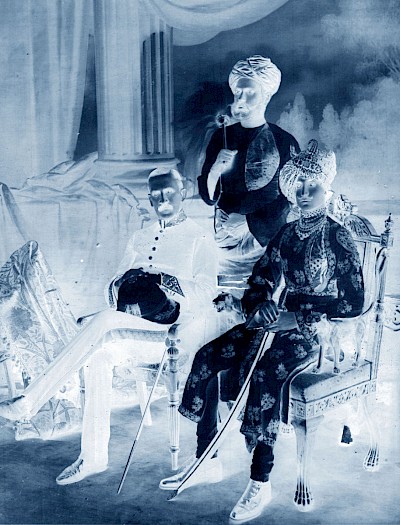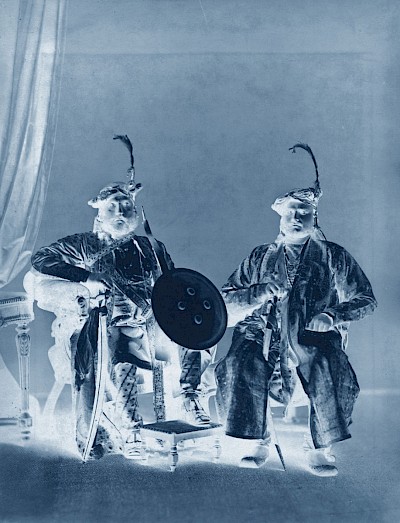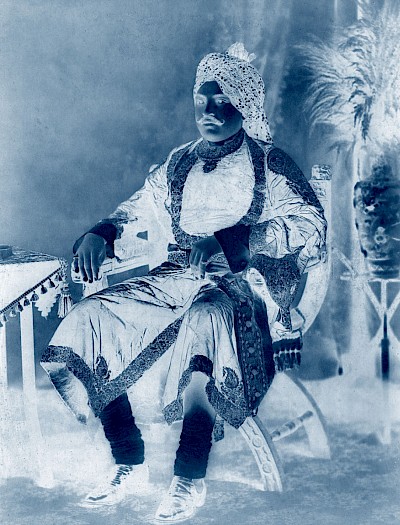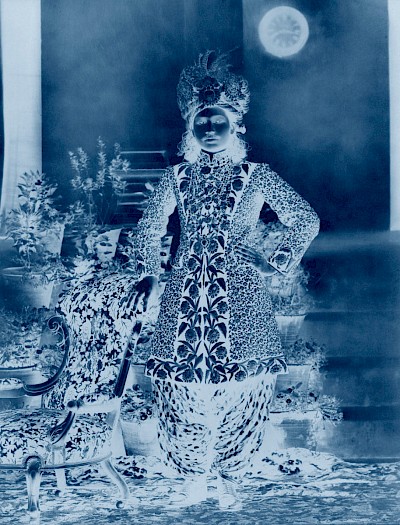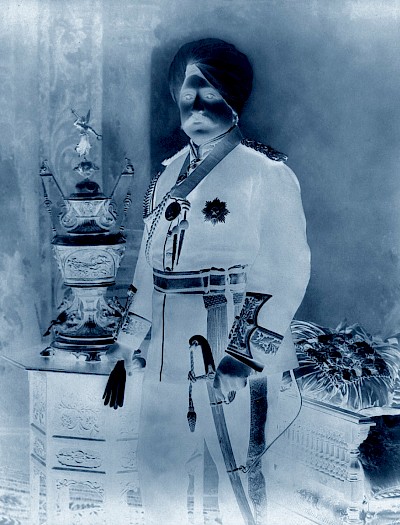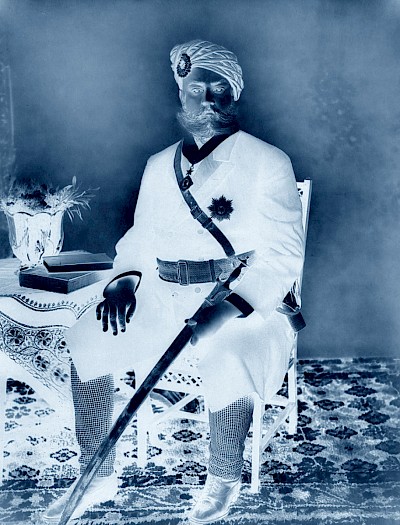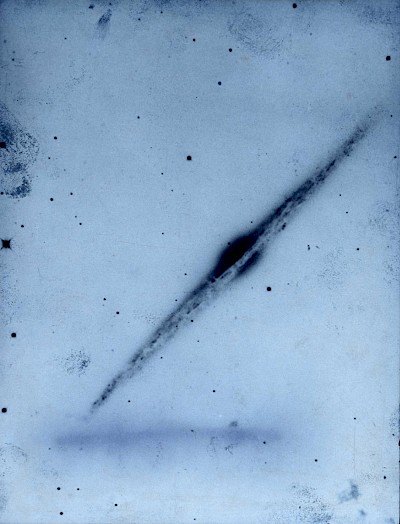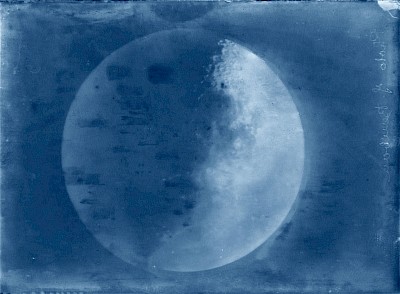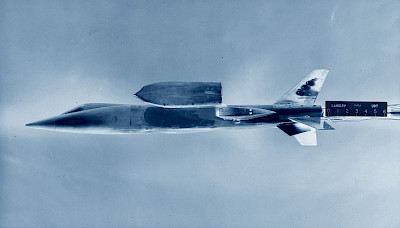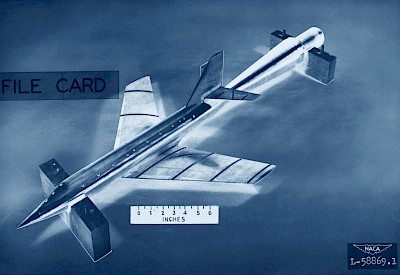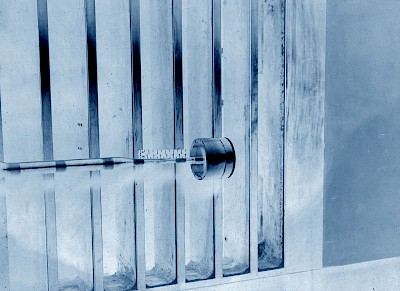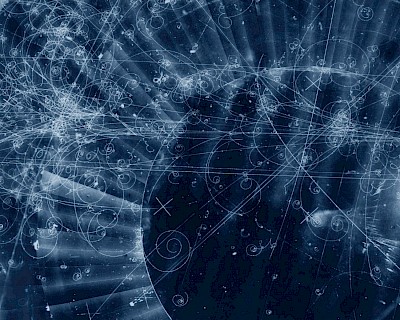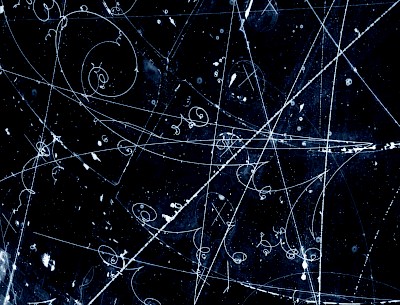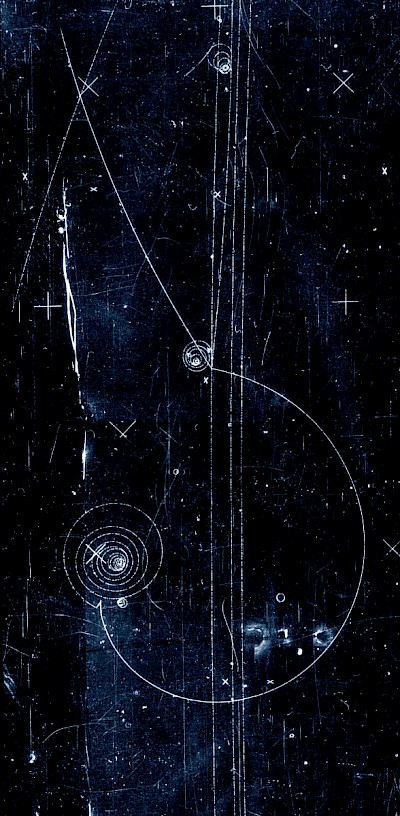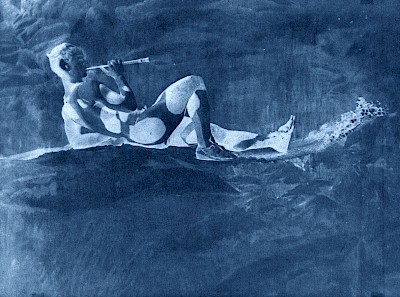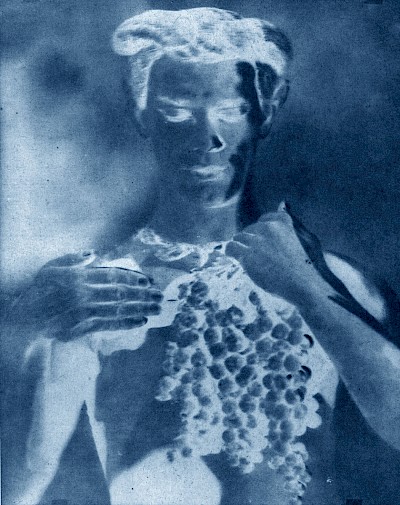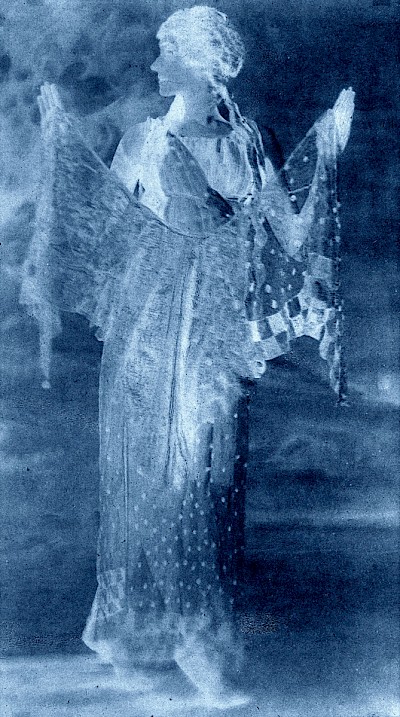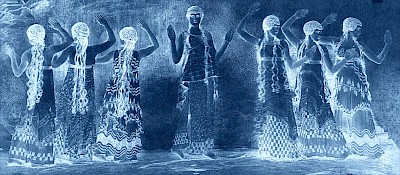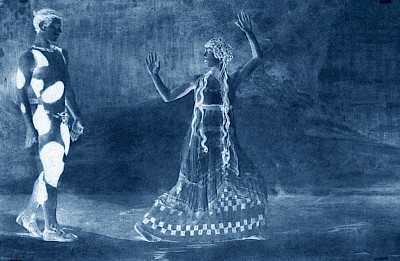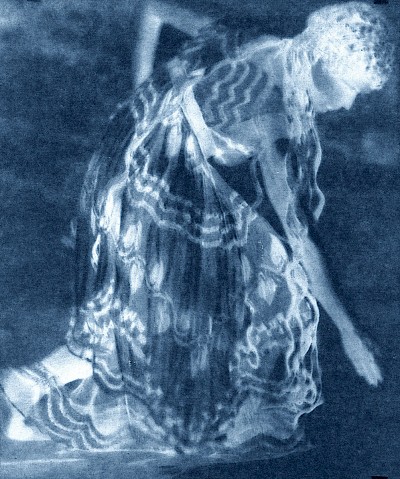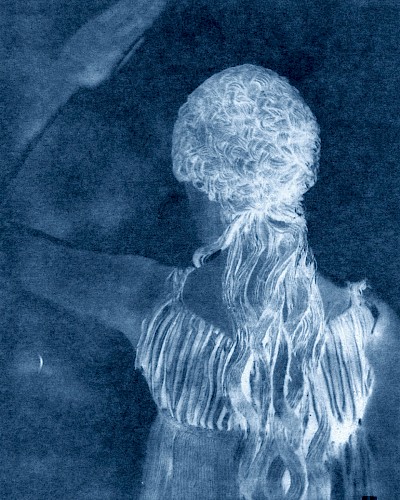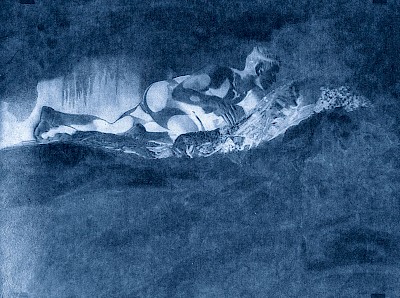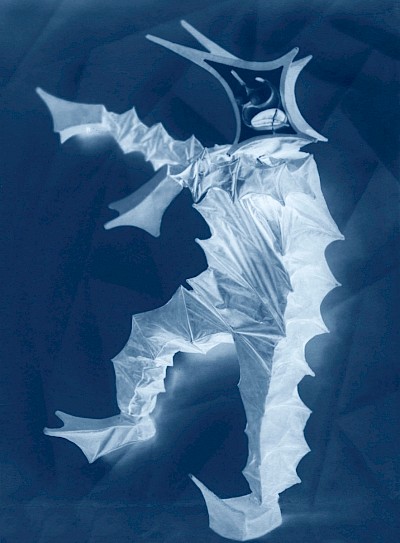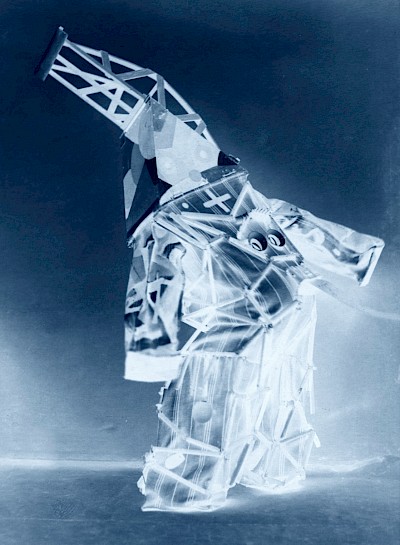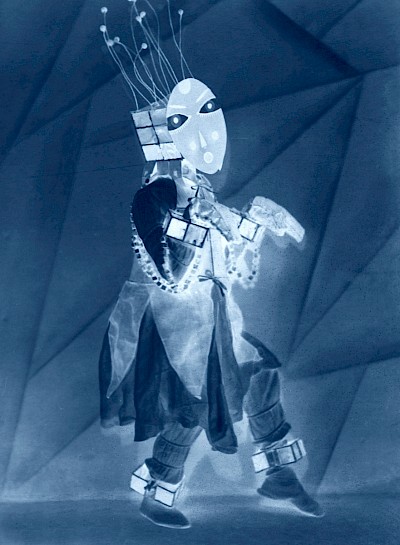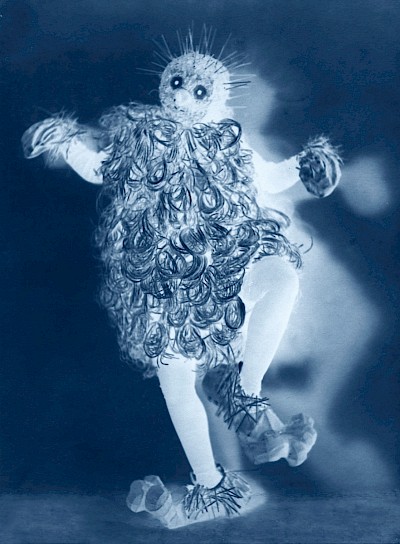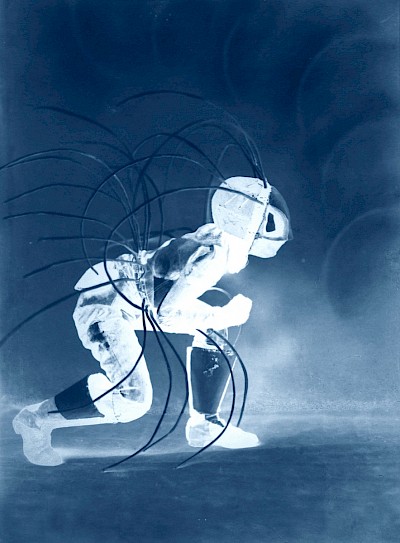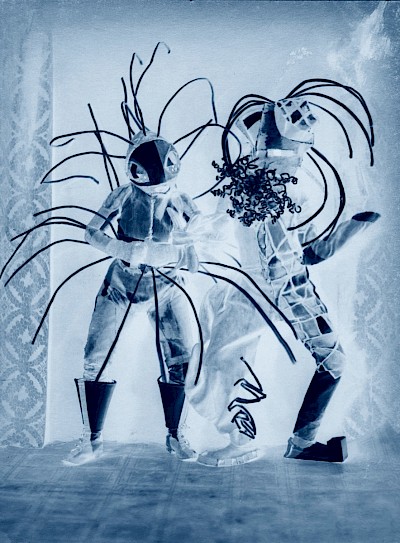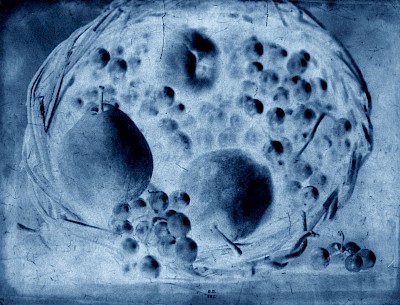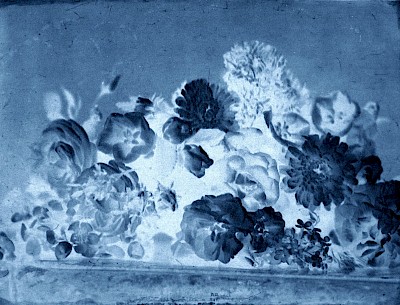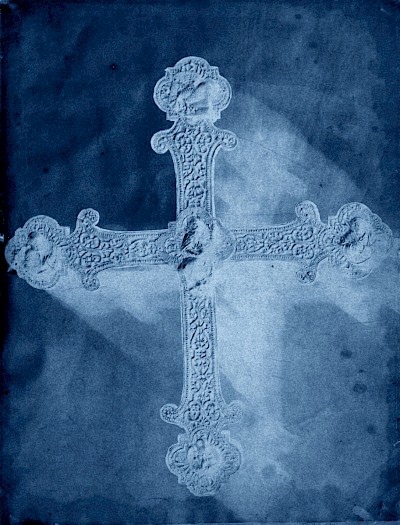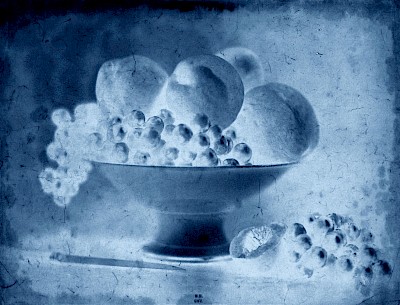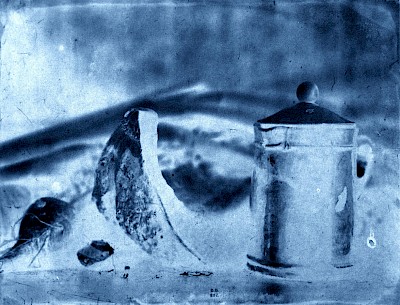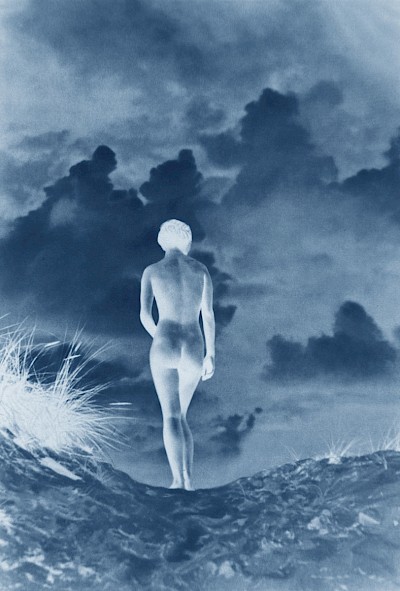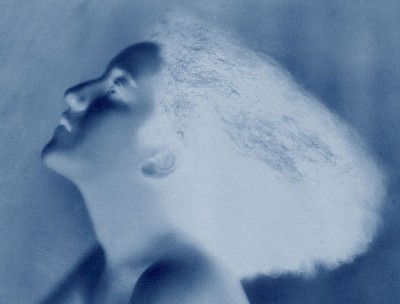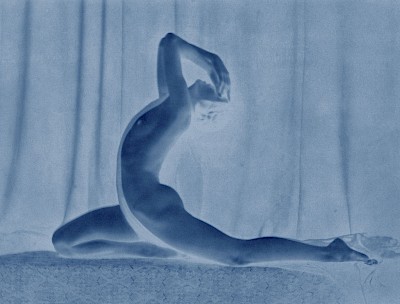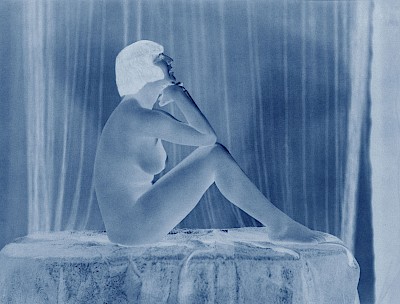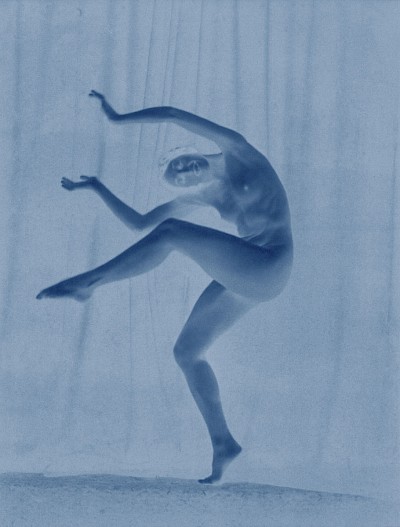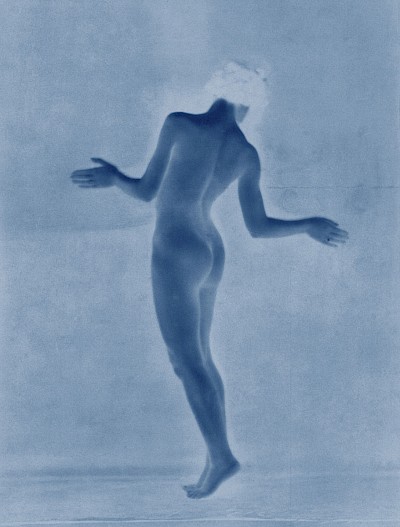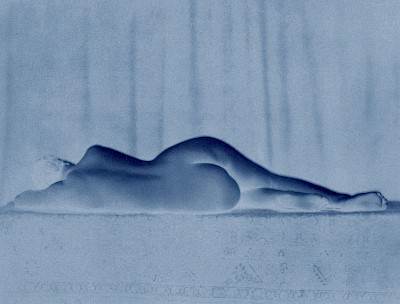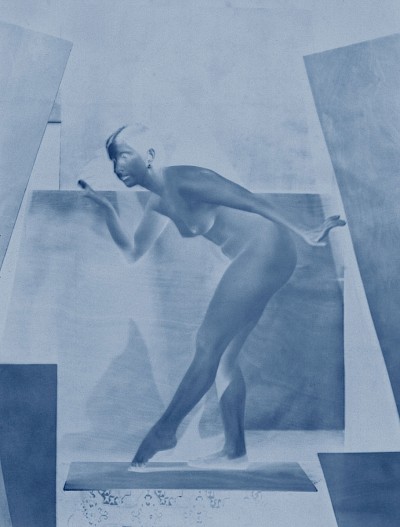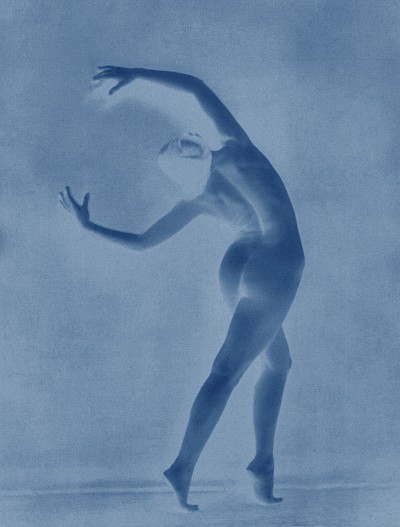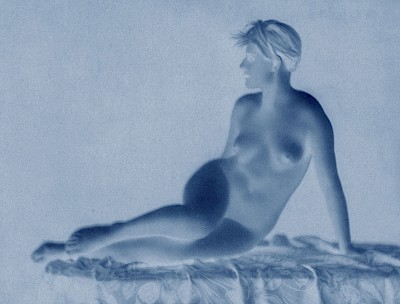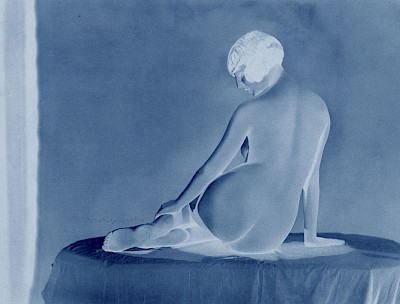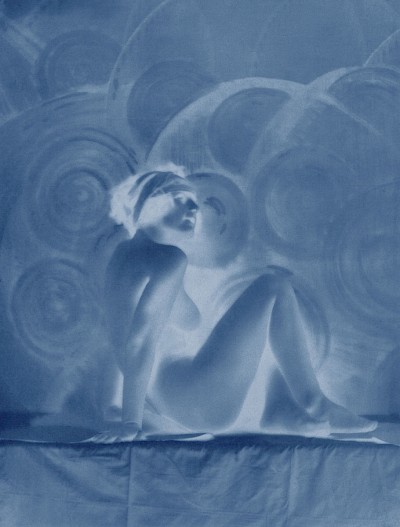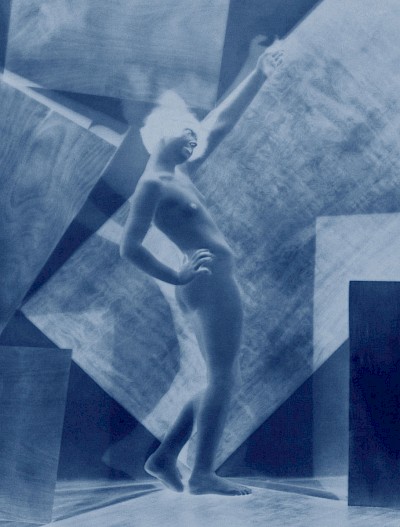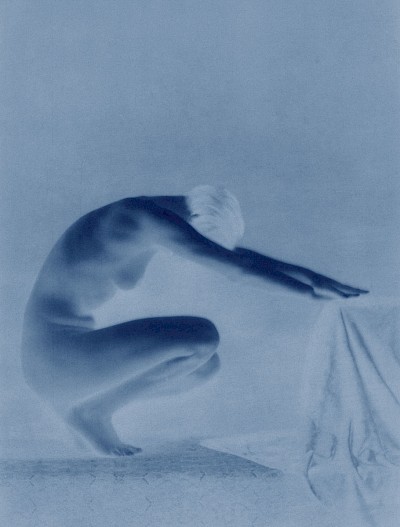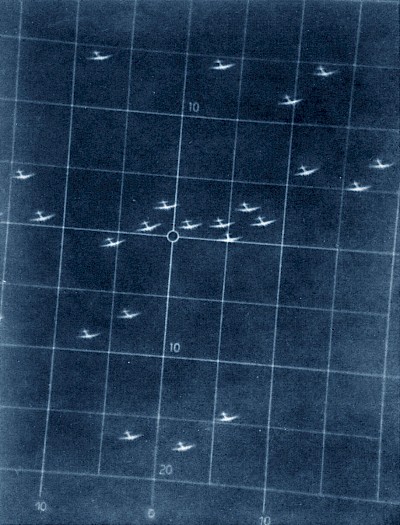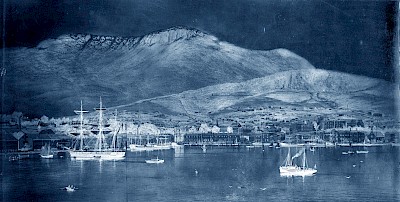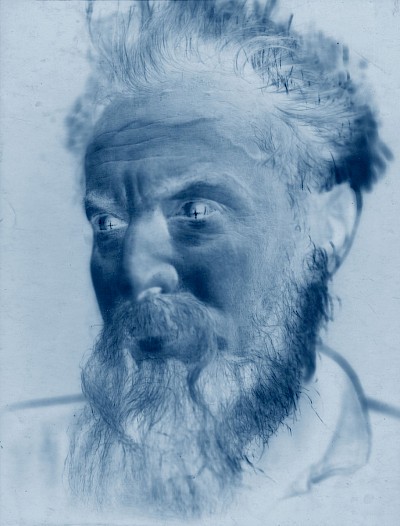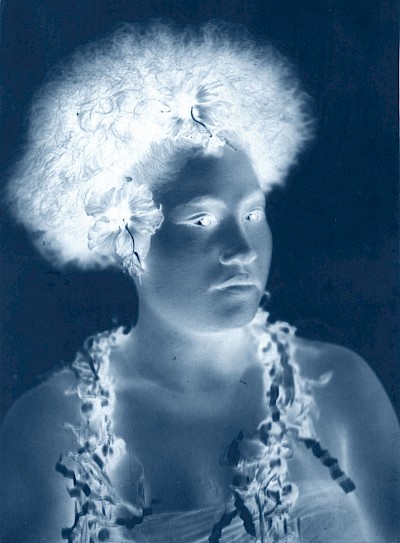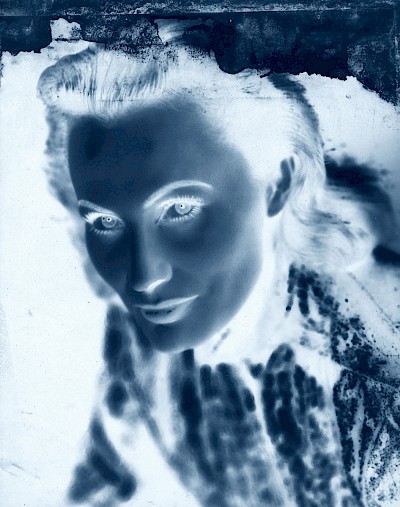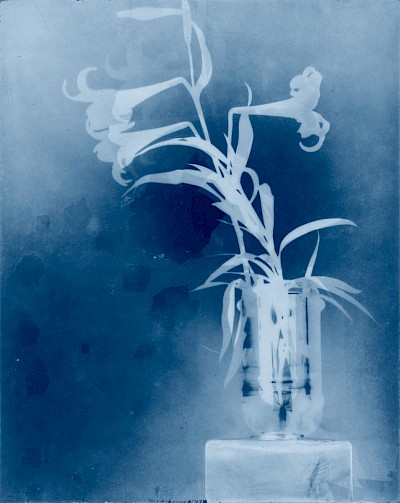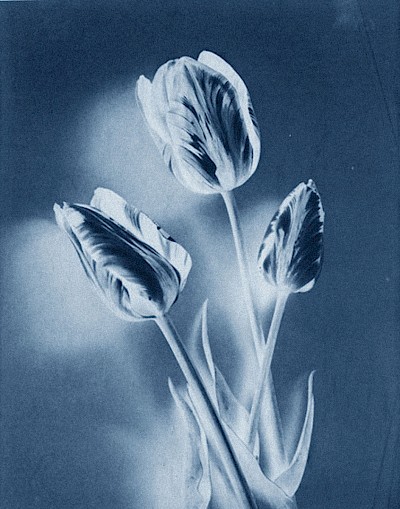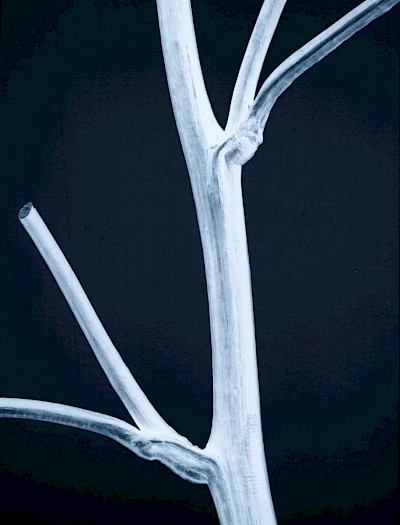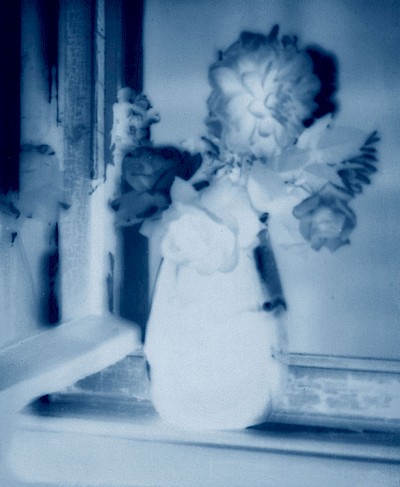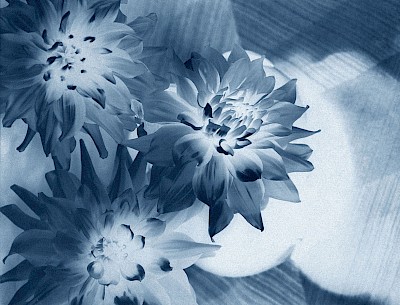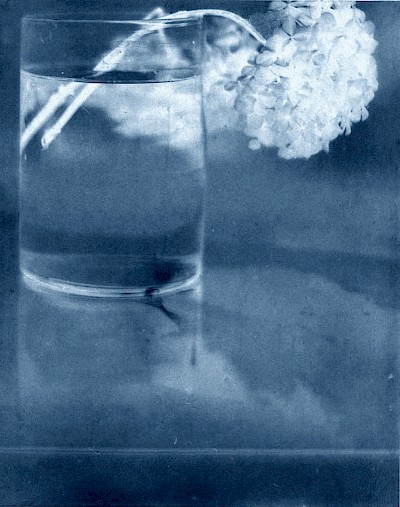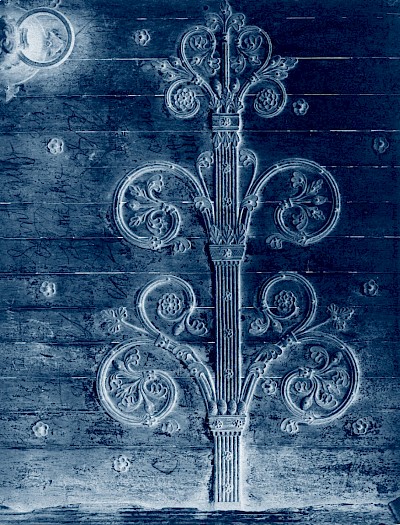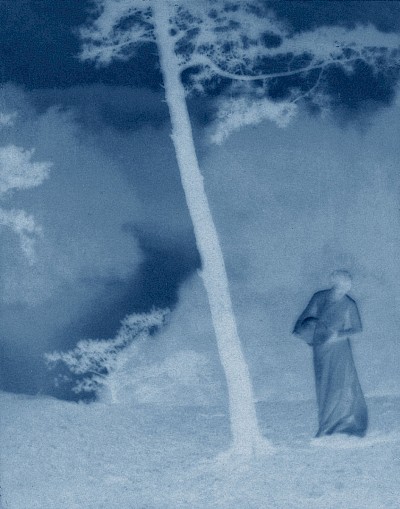Negatives
Interested in photographic techniques at an early stage, Thomas Ruff began around 2014 to intensify his studies of the visual appearance of the source material of printed analog photography: the “negative.” To visualize the photographic reality and pictorial qualities, he transformed historical photographs into “digital negatives.” In the process, he not only changed the light-dark distribution in the image. The brownish hue of the photographs printed on albumin paper also became a cool, artificial blue tone. The aim of the processing was to highlight the photographic “negative,” which in analog photography was never actually the object of contemplation, but was rather always only a means to an end. In this series, it is treated as an “original” worth viewing, from which a photographic print is made and which, due to digital photography, is in danger of disappearing completely. The series encompasses the entire spectrum of historical black-and-white photography and is divided accordingly into various subgroups.
neg◊artists: artist studios (late 19th century)
neg◊bal / neg◊jap / neg◊zea: ethnographic photographs from Bali, Japan, and New Zealand (late 19th century)
neg◊crime: forensic photographs (1920s/30s)
neg◊dan / neg◊var: dance und vaudeville (1920s/30s)
neg◊india: portraits of princes and chiefs of India (circa 1900)
neg◊kos / neg◊moon: moon and cosmos (second half of the 19th century)
neg◊lal / neg◊pro: Langley Research Center (1950s/60s) / protons (1960s/70s)
neg◊lapresmidi: Vaslav Nijinsky’s ballet L’Apres-midi d’un faune photographed by Adolphe de Meyer (1868–1946) in 1912
neg◊laviniaschulz: Lavinia Schulz (1896-1924) and Walter Holdt (1899-1924) dancing in whole-body masks, photographed by Minya Diez-Dührkoop (1873-1929) in 1924
neg◊lesecq: still lifes by Henri Le Secq (1818–1882), executed in the mid-19th century
neg◊marey: chronophotographic experiments by Étienne-Jules Marey (1830–1904) made in the 1870s
neg◊nud: nude photography from various sources (1920s/30s)
neg◊nus: nude photography by Laryew (Stanislav Walery) (1863–1935) from the 1920s
neg◊plane / neg◊ship: planes and ships (turn of the 19th/20th century)
neg◊por: portraits (first half 20th century)
neg◊stil: still lifes (19th/20th century)
neg◊white: photographs by Clarence Hudson White (1871–1925), circa 1900

Negatives
Interested in photographic techniques at an early stage, Thomas Ruff began around 2014 to intensify his studies of the visual appearance of the source material of printed analog photography: the “negative.” To visualize the photographic reality and pictorial qualities, he transformed historical photographs into “digital negatives.” In the process, he not only changed the light-dark distribution in the image. The brownish hue of the photographs printed on albumin paper also became a cool, artificial blue tone. The aim of the processing was to highlight the photographic “negative,” which in analog photography was never actually the object of contemplation, but was rather always only a means to an end. In this series, it is treated as an “original” worth viewing, from which a photographic print is made and which, due to digital photography, is in danger of disappearing completely. The series encompasses the entire spectrum of historical black-and-white photography and is divided accordingly into various subgroups.
neg◊artists: artist studios (late 19th century)
neg◊bal / neg◊jap / neg◊zea: ethnographic photographs from Bali, Japan, and New Zealand (late 19th century)
neg◊crime: forensic photographs (1920s/30s)
neg◊dan / neg◊var: dance und vaudeville (1920s/30s)
neg◊india: portraits of princes and chiefs of India (circa 1900)
neg◊kos / neg◊moon: moon and cosmos (second half of the 19th century)
neg◊lal / neg◊pro: Langley Research Center (1950s/60s) / protons (1960s/70s)
neg◊lapresmidi: Vaslav Nijinsky’s ballet L’Apres-midi d’un faune photographed by Adolphe de Meyer (1868–1946) in 1912
neg◊laviniaschulz: Lavinia Schulz (1896-1924) and Walter Holdt (1899-1924) dancing in whole-body masks, photographed by Minya Diez-Dührkoop (1873-1929) in 1924
neg◊lesecq: still lifes by Henri Le Secq (1818–1882), executed in the mid-19th century
neg◊marey: chronophotographic experiments by Étienne-Jules Marey (1830–1904) made in the 1870s
neg◊nud: nude photography from various sources (1920s/30s)
neg◊nus: nude photography by Laryew (Stanislav Walery) (1863–1935) from the 1920s
neg◊plane / neg◊ship: planes and ships (turn of the 19th/20th century)
neg◊por: portraits (first half 20th century)
neg◊stil: still lifes (19th/20th century)
neg◊white: photographs by Clarence Hudson White (1871–1925), circa 1900






